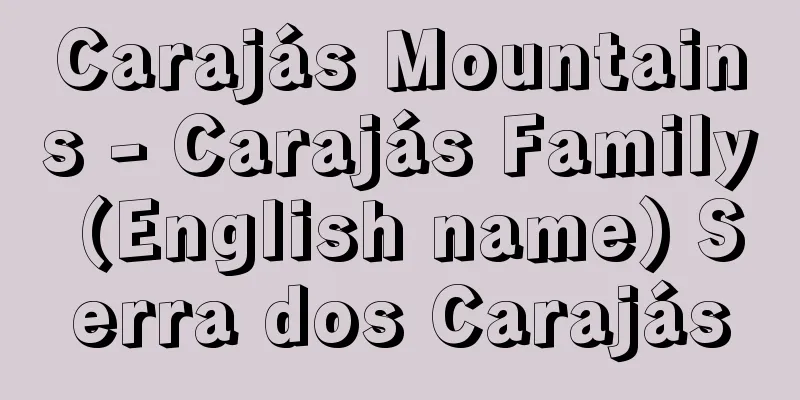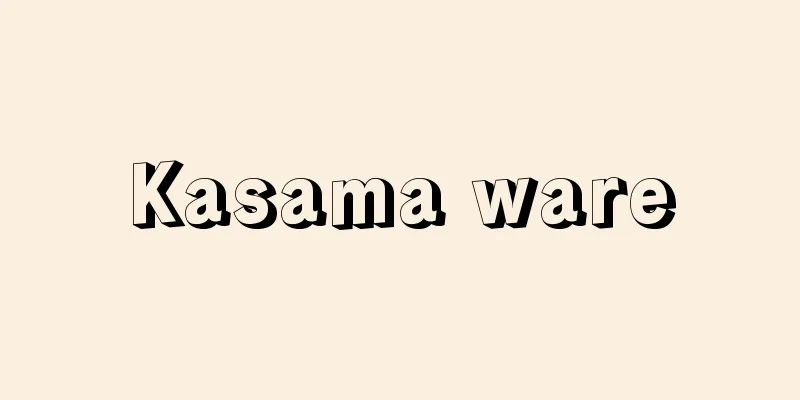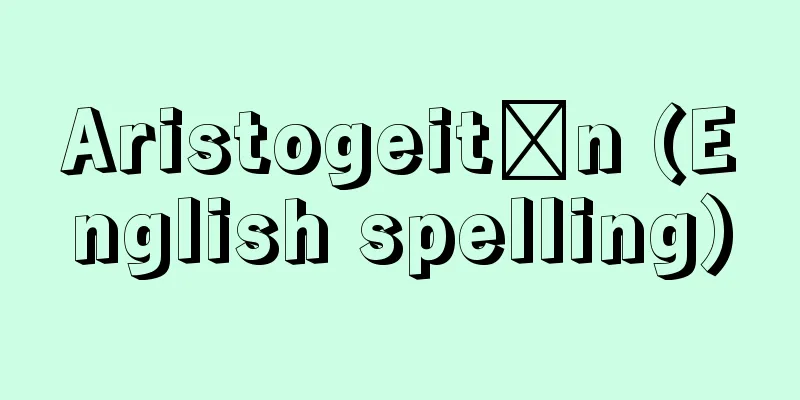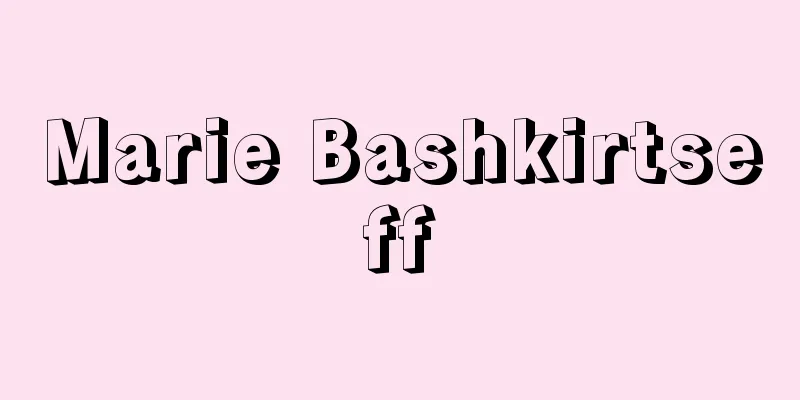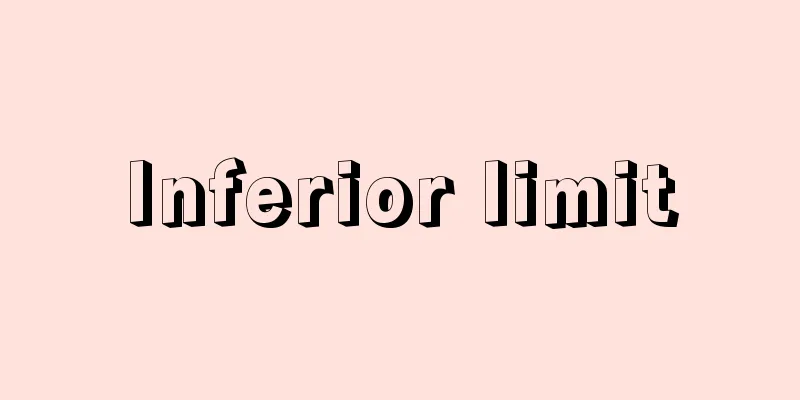Urban sociology
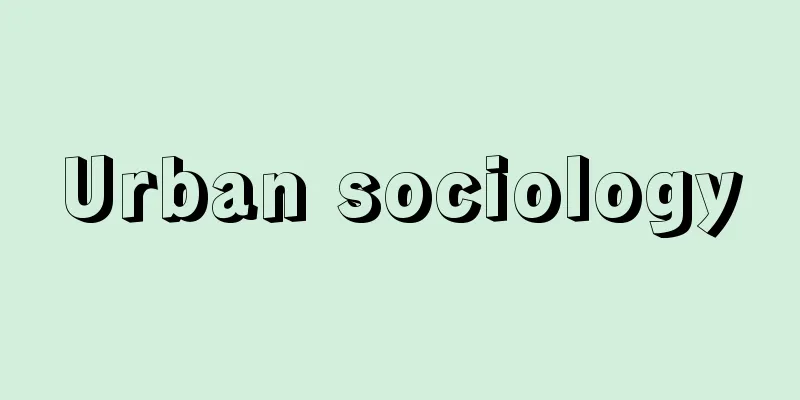
|
A branch of sociology that focuses on cities and urban lifestyles. It is sometimes contrasted with rural sociology, but its specific subject is ultimately "the urban," and it extends not only to cities but also to suburban and rural areas. [Yuetsu Takahashi] Research AreaThe research areas of urban sociology are divided into five. The first is social structure, which includes (1) regional structure, population structure, (2) class structure, group structure, and (3) family, school, business, etc. (as structural elements of the city). The second is life structure, which includes group participation, life relationships (kinship, neighborhood, etc.), daily life time, living space, and standard of living. The third is social consciousness, which includes urban personality, social character, citizen consciousness, resident consciousness, and life consciousness. The fourth is urban planning, which includes development plans, social plans, town development, and community formation. The fifth is urban problems, which includes problems of the living environment (living infrastructure, living facilities, etc.), pollution, and disasters, as well as social pathology (crime, delinquency, chronic alcoholism, drugs, mental disorders, etc.) and social welfare. Of these, the research areas of social structure, life structure, and social consciousness are fundamental to urban sociology, while the research areas of urban planning and urban problems are applied. However, it goes without saying that all research areas are closely related to each other. In either field, urban sociology exists where research into issues is conducted in relation to "urban" issues. [Yuetsu Takahashi] ExpandUrban sociology was established as a field of sociology in the 1920s and 1930s by the Chicago School, led by R. E. Park and E. W. Burgess. Park divided social processes into four stages: competition, conflict, adaptation, and assimilation. He believed that communities are formed in the process of competition, while societies (social order based on consensus) are formed in the processes of conflict, adaptation, and assimilation. He considered the task of urban sociology to be to explore how the transition from community to society is possible. Human ecology is responsible for the study of communities formed in the process of competition. Park's urban sociology was continued and developed by L. Worth. Worth considered the city as an independent variable and believed that cities give rise to urban lifestyles (often simply called urbanism), which in turn creates urban society. He argued that urban lifestyles can be understood from three perspectives: (1) human ecological aspects, (2) social groups and social organizations, and (3) social psychology. This was the first time that the "urban thing" known as urban lifestyle was made clear, and the mainstream of urban sociology was established. However, both Park and Worth shared the common theme of social disintegration theory, which reflected the conditions of a real city (Chicago) that grew rapidly from the late 19th century to the early 20th century. Later, under the guidance of Park and others, a series of Chicago monographs were produced on themes such as hobos, family disintegration, crime, juvenile delinquency, and slums, and the main axis of urban sociology developed by criticizing, revising, and inheriting the urban sociology established by the Chicago School. One trend is the neo-Marxist urban sociology that emerged in the mid-1970s and is based on Marxist historical materialism. The new urban sociology, represented by Manuel Castells (1942- ), developed a critique of traditional urban sociology, centered on the Chicago School. Castells presented a perspective that grasped space as an urban system (a system of elements of production, consumption, exchange, and management), and focused his discussion on the collective consumption process. In The City and the Grassroots (1983), Castells traces, through detailed historical empirical analysis, the state intervention in the collective consumption process in housing, transportation, medical care, welfare, and other areas in advanced capitalist societies, and the development of the urban social movement that resulted from this intervention. Since the second half of the 1980s, Castells has pointed to the emergence of the "informational city" (1989) as a new spatial process accompanying the development of information technology and the progress of economic restructuring, and has developed a new urban and spatial theory. Another trend is the subculture theory of Claude Serge Fischer (1948- ), also known as neo-urbanism. Unlike the new urban sociology that criticized the ideology of the Chicago School, Fischer developed an internal criticism that reconstructed the theory of urbanism. The viewpoint of Fischer's subculture theory is that cities generate "unconventional" and diverse subcultures through "structural differentiation" (development of the division of labor, differentiation of social networks). Empirical research on subculture theory has been accumulated in the form of verification of the relationship between urbanity and social networks. [Yuetsu Takahashi and Ken Harada] Japan's research achievementsJapanese urban sociology began in earnest after the war, with Okui Fukutaro (1897-1965) publishing Modern Metropolis Theory (1940) before the Second World War. Like Okui, many postwar studies were strongly influenced by American urban sociology, including those by Isomura Eiichi (1903-1997) (Urban Sociology, 1953). However, there were also works that were uniquely Japanese, such as Ariga Kizaemon's Issues in Urban Sociology (1948), which looked at the "ethnic characteristics" of clans and groups, and Suzuki Eitaro's Principles of Urban Sociology (1957), which focused on "nodal institutions." Furthermore, urban sociology and local community theory emerged from a Marxist perspective, taking the rural sociology research of Fukutake Tadashi (1917-1989) from a Marxist perspective (such as Modern Japanese Urban Society, edited by Kitagawa Takayoshi and Shimazaki Minoru, 1962), and Structural Analysis of Industrial Cities (1959), which was based on the theory of comprehensive sociology by Shinmei Masamichi. Thus, Japanese urban sociology is quite diverse, but it can be said that American urban sociology has played a major role in its development. The issues that urban sociology deals with have also changed over time. In the late 1940s, research on social pathology was prominent, but from the mid-1950s onwards, research on urbanization, urban personality and social structure (including theories of regional groups and urban typologies) developed. From around 1965, urban problems caused by rapid urbanization attracted attention, and issues of resident movements and civic consciousness were raised, leading to active research on community formation and life structures. In the 1980s, the research field of urban sociology expanded with the major social changes of information technology, internationalization and aging. In particular, against the backdrop of the rise of new urban sociology, world cities attracted attention in the process of urban restructuring accompanying globalization. Since the late 1990s, research has been conducted on the regional disparities between large cities and rural areas brought about by world urbanization, and the polarization of social classes within large cities. In particular, there was lively discussion on ethnicity studies due to the increase in foreign workers, and the underclass due to the increase in homelessness. In recent years, creative cities, which aim to revitalize cities by combining culture, art, and industry, by utilizing the creativity of local residents such as designers and architects, have been attracting attention. [Yuetsu Takahashi and Ken Harada] "Readings in Japanese Sociology 7: Cities" edited by Hiroshi Suzuki, Yuuyoshi Takahashi, and Takahiro Shinohara (1985, University of Tokyo Press) " "Urban Sociology in the 21st Century" edited by Yuuyoshi Takahashi, Miyoshi Kikuchi, and Wataru Egami (2002, Gakubunsha) " "Urban Sociology Selection I: Modern Urbanism" edited by Yasushi Matsumoto (2011, Nippon Hyoronsha) [References] | | | | | | | | | |Source: Shogakukan Encyclopedia Nipponica About Encyclopedia Nipponica Information | Legend |
|
都市ないし都市的生活様式をその研究の中心的な対象とする社会学の一分野。農村社会学rural sociologyと対比されることもあるが、その固有の対象は、究極的には「都市的なもの」the urbanであって、都市だけでなく、郊外、農村にも広がる。 [高橋勇悦] 研究領域都市社会学の研究領域は五つに分けられる。第一は社会構造で、(1)地域構造、人口構造、(2)階層・階級構成、集団構成、(3)家族、学校、企業など(ただし都市の構造的要素として)が含まれる。第二は生活構造で、これには集団参加、生活関係(親族関係、近隣関係など)、生活時間、生活空間、生活水準などが入る。第三は社会意識で、都市的パーソナリティー、社会的性格、市民意識、住民意識、生活意識などを含む。第四に都市計画があり、これは開発計画や社会計画、まちづくりやコミュニティの形成をその内容とする。第五に都市問題があり、これには生活環境(生活基盤、生活施設など)、公害、災害の問題のほかに、社会病理(犯罪・非行、慢性アルコール中毒、麻薬、精神障害など)、社会福祉の問題も含まれる。このうち、社会構造、生活構造、社会意識の研究領域は都市社会学の基礎的なものであり、都市計画と都市問題の研究領域は応用的なものである。しかし、すべての領域の研究は相互に密接に関連しあっていることはもちろんである。そして、いずれの領域においても「都市的なもの」との関連において問題の研究が進められるところに都市社会学は成立する。 [高橋勇悦] 展開都市社会学は、1920年代から1930年代にかけて、R・E・パーク、E・W・バージェスを中心とするシカゴ学派によって社会学の一分野として確立された。パークは社会過程を競争、闘争、応化、同化の四つに分けてとらえ、競争の過程においてコミュニティが、また闘争、応化、同化の過程においてソサエティ(合意による社会秩序)がそれぞれ形成されると考え、コミュニティからソサエティへの移行がいかにして可能になるか、それを追究するのが都市社会学の課題であるとした。競争competitionの過程のなかで形成されるコミュニティの研究を担うのが人間生態学human ecologyである。 パークの都市社会学はL・ワースによって継承、展開された。ワースは都市cityを独立変数として、都市が都市的生活様式(urbanism、アーバニズムとそのままいわれることが多い)を生み、それが都市社会urban societyをつくると考え、その都市的生活様式は、(1)人間生態学的側面、(2)社会集団・社会組織的側面、(3)社会心理学的側面の三側面からとらえられると主張した。都市的生活様式という「都市的なもの」がやっと初めて明示され、ここに都市社会学の主流は確立したのである。 しかし、パークにしろワースにしろ、19世紀後半から20世紀初頭にかけて急成長した現実の都市(シカゴ)の状況を反映した社会解体論の色彩をもっていた、という点では共通している。その後、パークらの指導の下、ホーボー(渡り労働者)、家族解体、犯罪、少年非行、スラムなどをテーマとした一連のシカゴ・モノグラフが生み出された都市社会学の主軸は、このシカゴ学派によって確立された都市社会学を批判、修正、継承する形で展開した。 一つの潮流は、1970年代なかばにおけるマルクス主義の史的唯物論に基礎づけられたネオ・マルクス主義都市社会学である。カステルManuel Castells(1942― )に代表される新都市社会学new urban sociologyは、シカゴ学派を中心とした伝統的都市社会学の批判を展開した。カステルは、都市システム(生産、消費、交換、管理の要素のシステム)として空間をとらえる視点を提示し、集合的消費過程を議論の焦点に据えた。『都市とグラスルーツ』The City and the Grassroots(1983)においてカステルは、先進資本主義社会における住宅・交通・医療・福祉などの集合的消費過程に対する国家介入、それを契機とする都市社会運動の展開を詳細な歴史的実証分析によって跡づけている。1980年代後半以降、カステルは、情報技術の発展・経済的リストラクチャリングの進展に伴う新たな空間過程としての『情報都市』The Informational City(1989)の出現を指摘し、新たな都市・空間理論を展開している。 もう一つの潮流は、ネオ・アーバニズム論とよばれるフィッシャーClaude Serge Fischer(1948― )の下位文化理論である。シカゴ学派のイデオロギー批判を行った新都市社会学とは異なり、フィッシャーはアーバニズム理論の再構築という内在的批判を展開した。フィッシャーの下位文化理論の視点は、都市は「構造的分化」(分業の発達、社会的ネットワークの分化)を通して、「非通念的」で多様な下位文化を生成するという点である。下位文化理論は、都市度と社会的ネットワークの関連の検証というかたちで実証研究が蓄積されている。 [高橋勇悦・原田 謙] 日本の研究業績日本の都市社会学は、第二次世界大戦前における奥井復太郎(1897―1965)の『現代大都市論』(1940)があるが、本格的には戦後に始まっている。奥井もそうだが、戦後も、磯村英一(いそむらえいいち)(1903―1997)(『都市社会学』1953)をはじめ、やはりアメリカの都市社会学の影響を強く受けた研究が多い。しかし、農村社会学で業績をあげた有賀喜左衞門(あるがきざえもん)の同族団・組という「民族的特質」の視点からの『都市社会学の課題』(1948)や、鈴木栄太郎の「結節的機関」を軸とする『都市社会学原理』(1957)など、いわば日本独自の都市社会学も提唱されている。また、福武直(ふくたけただし)(1917―1989)の農村社会学の研究をマルクス主義の視点で受け止めた立場からの都市社会学・地域社会論(北川隆吉(たかよし)・島崎稔(みのる)編著『現代日本の都市社会』1962など)や、新明正道(しんめいまさみち)の総合社会学の理論を踏まえた『産業都市の構造分析』(1959)なども現れた。このように、日本の都市社会学はかなり多様であるが、やはりアメリカの都市社会学が大きな一つの軸になって展開してきたといえよう。 都市社会学の対象となる問題も時代とともに変化してきている。1940年代後半は社会病理の研究が目だっているが、1950年代中期以降になると都市化、都市的パーソナリティーの研究や社会構造(地域集団論、都市類型論を含む)の研究が展開された。1965年(昭和40)ころから、急速な都市化に伴う都市問題が注目され、住民運動、市民意識の問題が取り上げられ、コミュニティ形成、生活構造などの諸研究が盛んであった。1980年代になると、情報化・国際化・高齢化という大きな社会変動に伴い、都市社会学の研究領域は拡大した。とくに新都市社会学の台頭を背景にして、グローバル化に伴う都市構造再編過程における世界都市world cityが注目を集めた。1990年代後半以降、その世界都市化がもたらした大都市と地方の地域間格差や、大都市内部における社会階層の分極化に関する研究が進められた。とくに、外国人労働者の増大に伴うエスニシティ(民族)研究、ホームレスの増大に伴うアンダークラスに関する議論が活発に展開された。近年では、デザイナーや建築家などの市民の創造性を活かして、文化芸術と産業の融合による都市再生を目ざす創造都市creative cityが注目を集めている。 [高橋勇悦・原田 謙] 『鈴木広・高橋勇悦・篠原隆弘編『リーディングス日本の社会学7 都市』(1985・東京大学出版会)』▽『高橋勇悦監修、菊池美代志・江上渉編『21世紀の都市社会学』(2002・学文社)』▽『松本康編『都市社会学セレクションⅠ 近代アーバニズム』(2011・日本評論社)』 [参照項目] | | | | | | | | | |出典 小学館 日本大百科全書(ニッポニカ)日本大百科全書(ニッポニカ)について 情報 | 凡例 |
>>: City Municipal Law - Toshijichitaiho
Recommend
bhukti
The Gupta Empire reorganized the Indian ruling sy...
Étienne Geoffroy Saint‐Hilaire
1772‐1844 French comparative anatomist. After the ...
Satan
…The concept of the devil among various ethnic gr...
Genetic character
This refers to the shapes and characteristics of ...
Covert - Entai
〘 noun 〙 Construction and other facilities to make...
Yan'an
A city in the center of the Yan'an Basin in no...
Shadow Blue - Inchin
It is a type of white porcelain, also called blue...
Ansariya [Mountain Range] - Ansariya
… [Nature] The country is divided into a narrow w...
Hair - Kaminoke
Hair on the head. [Synonyms] Hair, natural hair, n...
Cairn terrier
It is a domestic dog and a pet dog that originated...
Annaka [city] - Annaka
A city in the central-southern part of Gunma Prefe...
Oito Batutas - Oito Batutas
…He started playing the flute and choro at the ag...
Gelbvieh
...Milk yield is about 3,800 kg. (5) Gelbvieh: Or...
Supersaturation - Kahouwa (English spelling) supersaturation
This refers to a state in which the excess amount...
Tropical fish - Nettaigyo
It refers to tropical and subtropical fishes kept...

